QR Codes are a common sight now. Thanks to the increase in global smartphone penetration. It skyrocketed from 3.2 billion in 2016 to almost 7 billion in 2023. This translates to an annual increase of 11.83%.
According to Ahrefs reports, the worldwide (Google) search volume for the keyword “QR Code” has reached 2.5 million.
This suggests a strong potential for heavy traffic, showing increased interest in 2D barcode technology.
“Industries are increasingly recognizing the versatility and numerous benefits of QR Codes across various fields. For instance, restaurants have adopted interactive menu QR Codes as a substitute for physical menus, marketers utilize QR Codes to direct target audiences to online campaigns, and businesses integrate QR Codes for streamlined payment systems.” – Claeys
Claeys highlighted the healthcare sector’s use of QR Codes to simplify contact tracing initiatives during the peak pandemic.
QR Codes are like digital shortcuts. People can quickly access all sorts of information by scanning them with a smartphone.
This information includes websites, videos, contact details, special offers, and much more.
Insider Intelligence (eMarketer) published a report projecting a growth in QR Code scanning to 99.5 million in 2025—a 19% increase from their 2022 data.
Furthermore, the recent surge in smartphone users with improved internet access is considered a key factor contributing to the popularity of QR Codes.
These factors directly impact global users’ ability to scan QRs, as contemporary smartphones with reliable internet connections allow users to access QR Code-embedded content effortlessly.
Bitly, a link management platform, also observed a substantial 750% increase in QR Code downloads in their 2021 report, indicating active and widespread usage.
According to Statista, there are approximately 5.35 billion internet users worldwide. This represents approximately 66% of the global population of nearly 8 billion people.
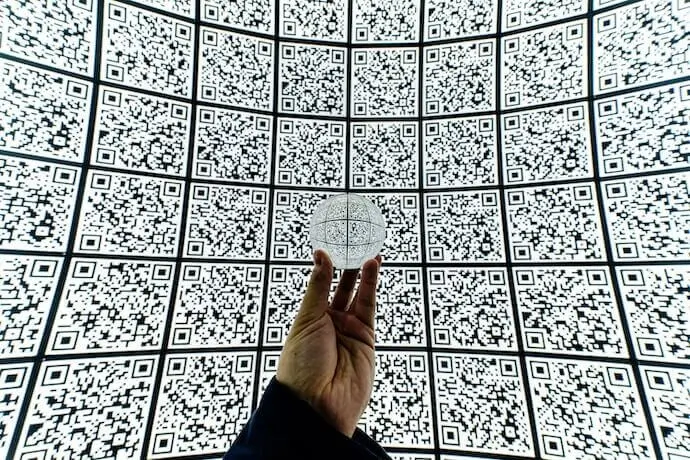
We earlier showed you whether people use QR codes or not. It clearly shows the soaring use of QR Codes.
Now, you might be wondering: What is the QR Code usage in exact numbers? What are the actual QR Code statistics?
Here is a short video to give you a snapshot of QR Code statistics:
It’s hard to find out exactly how many people use QR Codes and their industry-specific statistics.
But we’ve done some research and found a bunch of information about it from different studies and databases. Keep reading!
A. QR Code Statistics
Back in 2014, Adobe Systems conducted a study on QR Code usage over three months. The study covered four countries—Germany, France, the UK, and the US.
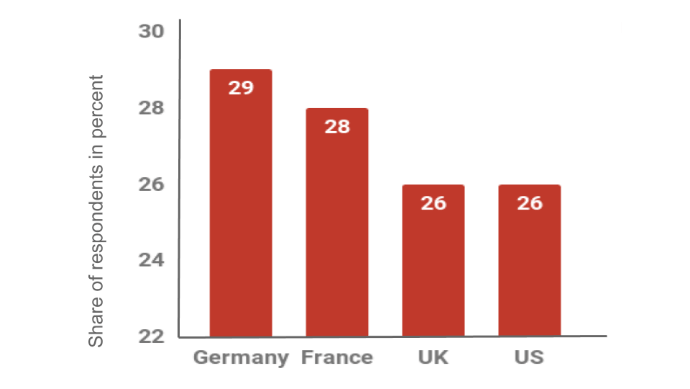
Of the total participants from Germany, a good 29% had used a QR Code. This number was 28% for France and 26% for the UK and the US.
Hence, it would be safe to say that 25-30% of populations in developed nations generally use QR Codes. And this was back in 2014. The usage has massively changed since then.
Later, in 2019, the Global Web Index also conducted a study. This study showed the global percentage of QR Code users. They were as follows:
- 8% in North America
- 13% in Latin America
- 15% in the Asia Pacific
- 10% in Europe and Middle East Asia
In their 2023 report, Bitly ranked countries based on their year-over-year growth in QR code creation.
The United Kingdom, Switzerland, and the United States led the way, which was followed by Germany and France.
Notably, Ukraine experienced a remarkable 14-fold increase in QR Code usage compared to the previous year.
1. QR Code usage in the US
According to Statista’s projections, approximately 89.5 million Americans are expected to scan QR Codes using smartphones by 2024, which is anticipated to rise to 99.5 million in 2025.
QR Codes are becoming more popular in the US, especially with the increasing adoption of contactless payments and online shopping.
Restaurants and stores are using them to make things easier for customers. This has helped businesses flourish in the US, especially the big brands and flagship stores.
QR Code-based services have also resulted in improved table turnover for restaurants and bars.
According to a similar report from Statista, approximately 37% of respondents expressed their willingness to scan a QR Code for payment, particularly in restaurants or bars.
The utilization of QRs is on the rise among individuals in the United States. Almost 60% of surveyed US consumers believe this technology is bound to become a permanent presence in their lives.
This expected growth is due to easy access to free QR Code generators and the fact that most new smartphones come with built-in scanners.
With more US companies using QR Codes for marketing and events, it’s no surprise that many people in the US see QR Codes as a lasting part of technology.
Scanova Insight: Our latest data reveals that Website URL QR Codes are the most widely used category in the US, making up 67.56% of total usage, followed by Document QR Codes at 17.36%.
2. Comparing QR Code trends in the US and the UK
In September 2020, Statista conducted a survey. It was about the increase in QR Code usage since shelter-in-place.
The survey included participants from both the US and the UK. Among the respondents, 46.75% agreed on increased QR Code usage.
Another survey was conducted in the same month with the respondents from the two regions. It enquired them about the most secure location for scanning the QR Code.
A good 42.55 % felt most secure at a restaurant, bar, or café. On the other hand, 19.4 % felt the same level of assurance at a gym, pool, or any other fitness center.
Hence, there is huge potential for US marketers to consider adding a QR code to their print media campaigns. This trend was also seen when we took a look at the QR Code usage in Latin America.
The US and countries such as Canada, Indonesia, Malaysia, Singapore, Hong Kong, Thailand, France, Switzerland, and Australia use QR Codes widely.
3. QR Code usage in Russia
In September 2020, Statista conducted a similar survey with Russian participants. It was to gauge their support for various measures to tackle the coronavirus.
According to the survey, 64% supported the introduction of the system with passes, QR Codes, and other similar movements within the system.
Interestingly, payments were the most frequent QR Code use case in 2021 in apparel stores.
It made up ~27% of the total share. Furthermore, about 8% of all QR Code payments happened at insurance companies.
These numbers indicate that people are now more aware of QR Codes than ever. Not only that, but they’re also willing to use them for day-to-day activities.
This clearly indicates that the Russians have not only become more receptive to QR Codes but are supporting them, too. This opens the door to adopting QR codes for various use cases nationwide.
4. QR Code usage in the Middle East and Africa
QR Code usage also surged in the Middle East and Africa. Proof? Well, because it went from 12% in 2017 to 18% in 2018. And the figures have only blown up post-pandemic.
Digital payments in the United Arab Emirates (UAE) grew annually over 9% between 2014 and 2019. This was higher than Europe’s average annual growth of 4% to 5%.
5. QR Codes in Europe
In September 2020, the MobileIron poll conducted a survey. The survey included consumers across Germany, the U.K., the Netherlands, Spain, and France.
Among the respondents, over half (54%) agreed to see an increase in QR Codes. This was since the pandemic began.
A recent survey by Statista shows that 90% of participants used a QR Code in the last month. 69% were also open to using QR Codes for future payments. It indicates that QR Code payments are on the brink of breaking into the mainstream post-pandemic.
A new market research firm Appinio study says that 75% of consumers have scanned a QR Code on FMCG products. 87% of respondents favor policies that ensure product-specific information conveyed digitally is truthful and accurate.
This data shows the growing momentum of QR Codes in Europe.
B. The surge in QR Code usage
According to Bluebite, the following surge in QR Code usage was reported from 2018 to 2020:
- 96% growth in QR Code Reach
- 94% surge in the number of interactions
- 98% increase in the number of interactions per object
This data conveys an increase in QR Code usage over the years.
Here are a couple of more research that show the latest QR Code usage:
FMI: The QR Code labels market is projected to reach $2.1 billion by 2027. This means growth at a CAGR of 8.9%.
Juniper Research has predicted that the number of QR Code users will exceed 2.2 billion in 2025. This would be an increase from 1.5 billion in 2020. This will translate to 29% of all mobile phone users worldwide in 2025.
Global spend via QR Code payments will reach over USD 3 trillion by 2025. This indicates an increase of 25% compared to 2022 (USD 2.4 trillion in 2022).
You might wonder, for which purpose do people use QR Codes? And the answer is—many. One of the most popular use cases is—payments. Another such use case is offering discount coupons via print promotions.
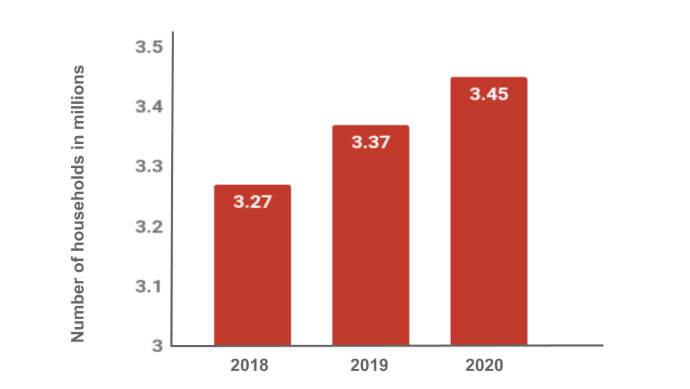
This QR Code usage has increased continuously since then. The coupon redemption using QR Codes has quadrupled from 1.3 billion in 2017 to 5.3 billion in 2019.
Here are other ways you can use QR Codes for marketing, education, security, etc.
If you’re a marketer, you know how important it is to know your target audience. So you might think—while many people are actually scanning QR Codes, what age groups do they fall under?
And the answer to this question is—predominantly between 24 to 54 years of age.
According to a 2015 study by Scanlife, here is the distribution of global QR Code scanning audience by age:
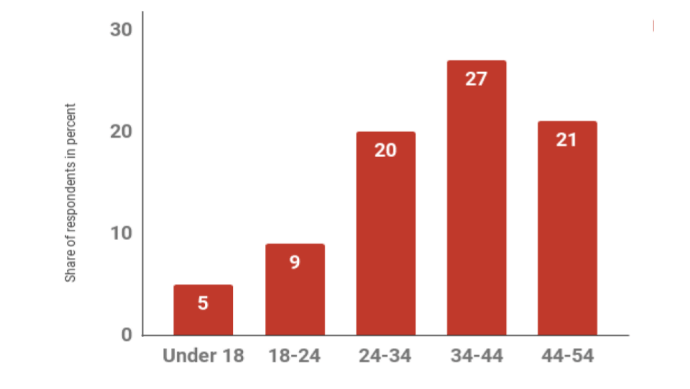
The age group with the highest percentage of people scanning QR Codes was 34-44 years.
Again, note that this was in 2015. Since then, apps—popular with the younger generation—such as Snapchat, Pinterest, and WeChat—have added QR Code scanning features. This shows that this age distribution in 2018 is likely to shift towards the younger generation.
Statista published a report in June 2021. As per it, 45% of shoppers from the US had used a marketing-related QR Code. The data revealed the highest share was from the age group of 18 to 29.
59% of respondents said that QR Codes should be permanent in mobile usage in the future.
Juniper Research also published some statistics in 2022. They predicted QR Code coupon redemption via mobile devices to quadruple to 5.3 billion in 2022 from 1.3 billion in 2021. It will grow even more in 2023. Great, right?
C. QR Code Usage in Payments—China, India, Global
1. China
WeChat—quite popular in China—made the nation obsessed with QR Codes in the last few years. The Chinese scan QR Codes to make payments, get information, authenticate themselves, avail offers, and practically every other use case.
According to CNN Tech, USD 1.65 Trillion in transactions happened via QR Codes in China in 2016.
Also, according to a 2015 survey by TNS Infratest and Google, the Chinese also lead in the percentage of people who have scanned a QR Code while shopping:
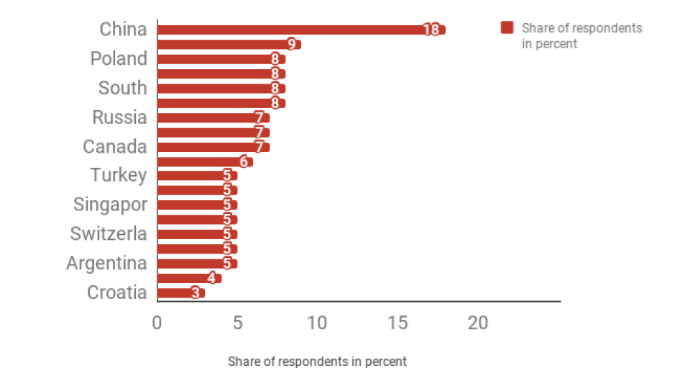
According to a study from 2018, 70% of China’s population regularly uses QR According to a 2018 study, 70% of China’s population regularly uses QR codes for payments. This is a huge number.
It is worth mentioning that the contactless payment market is expected to hit $4.68 trillion by 2027. It means an expansion at a CAGR of 19.8% from 2020 to 2027.
As per Tencent’s 2020 Pandemic report, for the first quarter itself, the economy from WeChat QR Codes shot up by 25.86% regardless of the tough macro environment.
Thanks to popular social media platforms in China! The QR Codes payments now account for over 90% of China’s mobile payments. This includes payment for food, clothing, housing, entertainment, education, etc.
A survey by China UnionPay, commercial banks, and other payment entities reveals interesting stats:
- 98% of respondents consider mobile payment as the most commonly used payment option
- People who scanned the QR Code was 85%, up by 6 points from 2019
- Chinese people use mobile payments 3 times a day on average, which rose 11 percent from 2019
In another update, citizens prefer gifting money via QR Codes instead of giving physical gifts.
2. India
In India, there has been a surge in QR Code transactions since the demonetization initiative by the Indian Government in November 2016.
Paytm—one of the biggest payment platforms—had 6 Million merchants by the beginning of 2018. The company aimed to increase this to 10 Million by the first half of 2018. This was as reported by First Post.
As of October 2021, the usage of the Bharat QR Code grew above 4.5 million in India. Over 9 million merchants in India now accept QR Code payments.
Bharat QR Code aims to standardize QR Code payments across merchant outlets in India. Different payment networks collaborate with the National Payment Corporation of India to promote this.
A study further claims that the value of QR Code payments will rise from $62 billion in 2022 to $125 billion in 2026. This growth will result from the national QR Code standard and reduced cash usage.
3. Global
The QR Code Payments Market is anticipated to witness a compound annual growth rate (CAGR) of 17.2% from 2023 to 2030, forecasting an increase from an estimated USD 9.5 billion in 2022 to USD 33.81 billion by 2030, according to the SNS Insider report.
A significant catalyst for growth is the strong adoption of QR Code payments within the retail and e-commerce sectors. Businesses operating in these domains increasingly incorporate QR Code payment options, taking advantage of their seamless transaction experience.
The convenience of swiftly and securely completing purchases is reshaping consumer behaviors, propelling the prominence of QR Code payments in the retail landscape.
According to a GSMA and NTT Data report on QR code usage for payments, mobile point-of-sale (POS) payments are projected to contribute to $4 trillion, comprising almost half of all digital payments by 2024.
Josep Alvarez from NTT Data, in a discussion with Robin Amlot of IBS Intelligence, highlights that the prevalence of QR Codes, primarily driven by extensive adoption in China and Asia, is expected to expand in Latin America and Africa.
To elevate digital payment choices in the UAE, CCAvenue has introduced advanced QR Code payment solutions, ensuring a smooth and secure transaction experience for businesses and consumers.
Using QR Code payments by CCAvenue presents a convenient option for customers in the UAE to conduct transactions using their smartphones.
In a joint initiative to promote digital payments in Nepal and India, Fonepay and NIPL have unveiled their pioneering QR Code payment solution. This strategic collaboration seeks to meet the increasing demand for efficient and secure digital transactions, offering a user-friendly platform for consumers and businesses in both nations.
When looking at different regions, the use of QR Code payments varies depending on local culture, economy, and rules. In Asia, especially China, QR Code payments are very common thanks to popular mobile payment apps.
On the other hand, some Western countries have been slower in adopting them because they already rely heavily on card payments. However, as more people see the benefits of QR Codes, their use is expected to grow worldwide.
Each region will shape the adoption of this technology in its own way based on regulations, consumer habits, and how open businesses are to using it.
With people having less disposable income and facing financial uncertainty, they’re being more careful about spending. This is changing the QR Code payments market as more consumers look for cheaper, efficient ways to pay. QR Codes are becoming a popular choice for those who want to save money.
Governments also see how important digital payments, including QR Codes, are for economic recovery. Many are pushing for cashless payments and digital inclusion. This support and financial incentives are helping the QR Code payment market grow.
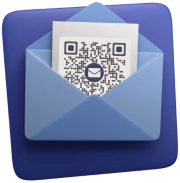

D. Impact of COVID-19 on digital payments
COVID-19 has even fueled Asia’s future in digital payment. According to McKinsey & Company, there is an 80/20 rise in digital payments. That means the digital user base will see a 20% increase, where 80% has been registered during the peak of Covid-19. This might remain for the long term, even after the pandemic.
It is not just Asia; the UK and Europe are embracing QR Codes more than ever. Mobileiron surveyed the UK and Europe to check the audience’s reliance on QR Codes.
It reported that 86.66% of smartphone users had scanned a QR Code at least once in their lifetime. And 36.40 % scan at least one QR Code a week.
In addition to this, 46.81% of respondents agreed that QR Codes make life easier in a touchless world. But that’s not where it ends. A good 38.99% of respondents want to see QR Codes used more broadly in the future.
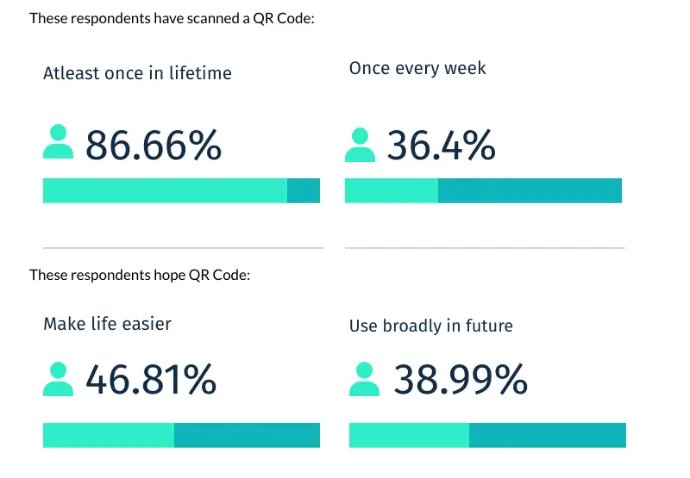
This is how QR Codes are shifting the paradigm of digitization in the UK, too.
Here are some more exciting numbers on QR Code statistics:
- Gartner: COVID-19 has accelerated contactless commerce. 80% of payments and checkout services will be contactless by 2024
- Statista: 18.8% of US consumers believe there has been a rise in QR Code usage after the pandemic.
CNBC: QR Code downloads have increased by 750% since the pandemic hit the world
E. QR Code usage in other industries
1. Restaurants
QR Codes are the new norm in the restaurant business. From contactless menus to payments, QR Codes are doing it all.
In fact, according to the latest Restaurant Readiness Index report, 33% of restaurant owners have accepted that QR Codes have enhanced their business.
QR codes cover everything from ordering food to checkout. In short, it optimizes the end-to-end experience for customers and businesses.
Case Study by OrderUp: QR Code payments indicate a growth of 240% by 2025. 63% of operators plan on investing in this type of technology in 2023.
Datasential: 58% of consumers would prefer using a QR Code to pay at a restaurant. Among consumers who have used QR Codes to order and pay, 70% said they had a positive experience.
43% of millennials and Gen-Z diners prefer contactless payment options when dining out. (2022 Future Restaurant Trend Report)
53% of millennials want mobile devices to augment their dining experience. Restaurants that fail to attract Millennials and Gen-Zers by not implementing a digital-driven strategy may see these generations’ retention rates drop by 43% or more. (Tacit)
82% of consumers view contactless as the cleaner way to pay, and contactless payments are up to 10 times faster than other in-person methods. This enables customers to get in and out of restaurants faster, turning tables faster. (MasterCard)
52% of all restaurants in the US have implemented QR Code menus. (Restaurant.org)
33% of restaurant owners using QR Codes have enhanced their business.
The Uruguay government, for example, has made it mandatory for high-street restaurants to place QR Codes on their premises. (Restaurant.org)
2. Food packaging
You have probably seen QR Codes on food and beverage packaging. They help to provide complete information, suggest recipes, or even show the entire product range.
Statista conducted a study in Canada in September 2016. It was about the usage of scanned food QR codes among consumers. 57% of users had scanned a food QR Code to get specific information about the product. And 43% had scanned a food QR Code to visit the brand’s website.
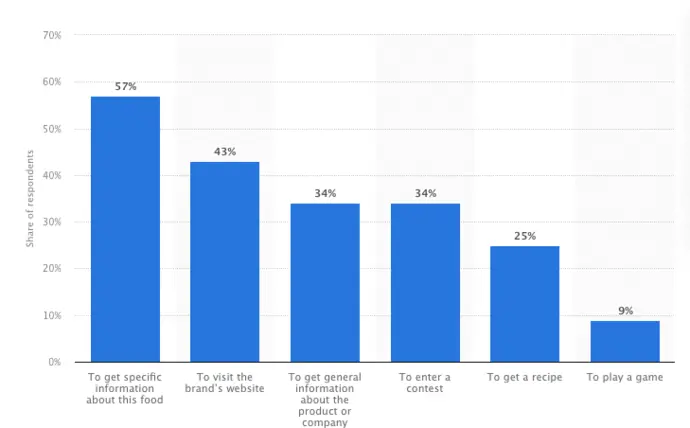
Source: Statista
Moreover, 34% of Canadian consumers scanned a food QR Code to get information about the product or company and to enter a contest.
The global smart packaging market, valued at $22 billion in 2020, will reach $38 billion by 2030. This exhibits a CAGR of 5.5% (Allied Market Research)
QR Codes have been at the forefront of smart packaging. The QR Code packaging market was valued at $5.3 billion in 2019. Indications suggest a CAGR of 8% in the coming years (Packaging Insights)
57% of consumers have scanned a QR Code on food packaging to get more information (Statista).
43% of consumers said they’d scanned a QR Code on product packaging to visit a brand’s website. 34% scanned a QR Code to learn about the company or enter a contest, 25% did it to get a recipe, and 9% scanned a QR Code to play a game (Statista).
65% of Chinese consumers consider QR Codes on product packaging essential for building trust. (Packaging Insights)
3. Augmented reality
Augmented Reality (AR) is an integration of real-time information such as images, videos, and text with real-world objects. It aims to make the user experience interactive and fun.
And QR Codes make it easier to access. In fact, many brands are already using it to their advantage. As per an estimate, the AR market will be worth between USD 70 billion and USD 75 billion by 2023.
Moreover, according to the Snap Consumer AR Global Report 2021, the adoption rate of AR has increased rapidly. According to estimates, by 2025, 75% of the total global population will become frequent users of AR.
The report also highlights that there has been a 94% increase in customer conversion rates thanks to the AR on products.
Since QR Codes help with easy access to AR, they are more likely to be used on a mass scale by businesses. You’d be enthused to know that AR and VR market is projected to grow by USD 162.71 billion by 2025.
F. COVID-derived adoption of QR Codes
The pandemic has led many businesses and governments to adopt QR Codes for many unique use cases. Here are some of them:
- Carlsberg, a multinational brewer, has added QR Codes to various touchpoints. The customers can scan them to gain points, accept event invitations, or even find details about a product
- In New South Wales, Australia, the government made it compulsory to use the QR Codes in shops and cafes for contact tracing.
- American giants such as Walmart, Starbucks, and Decathlon are using QR Codes for payments and loyalty accounts. Similarly, Nike, Home Depot, and Diesel use them for marketing. On the other hand, Coca-Cola and Zara are trying to explore more use cases of QR Codes for their business
- Restaurants across the world have replaced their paper-based menus with Menu QR Codes. Guests can simply scan them to access the menu digitally on their phone
- China has recently mandated the use of QR Codes for health and travel. They’re enforcing it to turn into a global mechanism
Here’s a report on more than 20 QR Code-related trends the world has seen since the pandemic. Some of the hottest use cases of QR Codes are in NFTs (Non-fungible tokens) and gamification technology.
According to Scanova, QR Code creation saw an incredible 301.51% growth from FY 2020-21 to FY 2023-24, with a 38.11% annual growth rate. This shows how quickly QR Codes are being adopted across different industries.
G. QR Code Trends of 2023
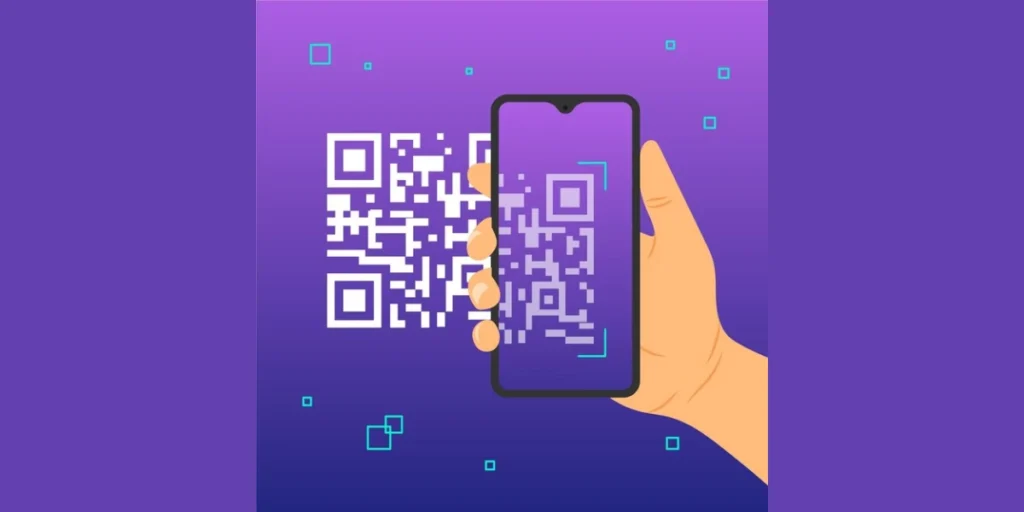
1. Brands using AI-powered QR Codes for customer engagement
A. Coca-Cola’s AI-powered QR Code for promotion of limited edition drink
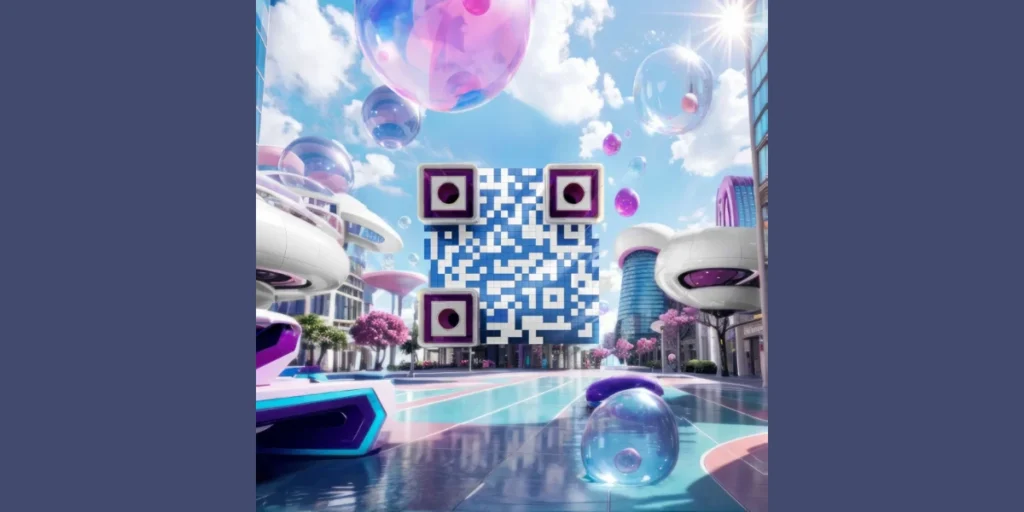
In September 2023, Coca-Cola incorporated AI-driven QR Codes onto the packaging of its exclusive beverage. These QR Codes directed customers to a webpage, allowing them to use their cameras to capture images of their present surroundings and visualize how they might appear in the future.
B. Scapia’s billboards with AI-powered QR Codes for outdoor promotional campaigns
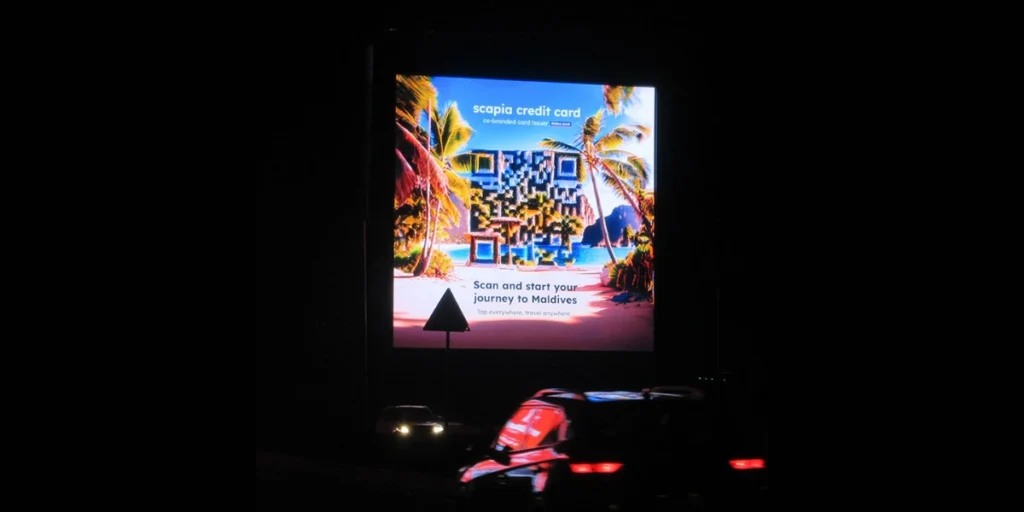
In September 2023, the credit card company Scapia placed billboards featuring AI-enhanced QR Codes in multiple cities and busy airports.
These QR Codes prompted passersby to envision their upcoming vacations and contemplate acquiring the Scapia card to visually turn those dreams into reality, showcasing various tourist destinations.
Upon scanning the QR Codes, viewers were directed to a webpage highlighting the card’s features.
C. Coca-Cola’s AI-powered QR Codes to boost out-of-home (OOH) engagement

In August 2023, Coca-Cola introduced AI-driven QR Codes in movie theaters, stadiums, and theme parks as a component of their out-of-home (OOH) campaign to showcase their music platform, ‘Coke Studio.’
These QR Codes directed viewers to the promotional video crafted for the campaign. According to the brand, the objective was to enhance engagement by offering visually appealing and interactive QR Codes.
2. Brands using QR Codes on digital and print media
A. L’Oréal Paris’s QR Code enabled AR campaign for product launch
In December 2023, L’Oréal Paris, the beauty company, placed a billboard with a QR Code above the Sephora store in Times Square, New York, to introduce its latest product.
Beauty enthusiasts had the opportunity to scan the QR Code on the digital billboard, triggering a real-time augmented reality (AR) experience that displayed the new hair oil flowing from the advertisement and enveloping Times Square.
Furthermore, viewers had the option to redeem a complimentary sample at the nearby Sephora outlet, establishing a seamless and instant brand connection between the digital and physical realms.
B. AR QR Code for community promotion by Disney and Verizon
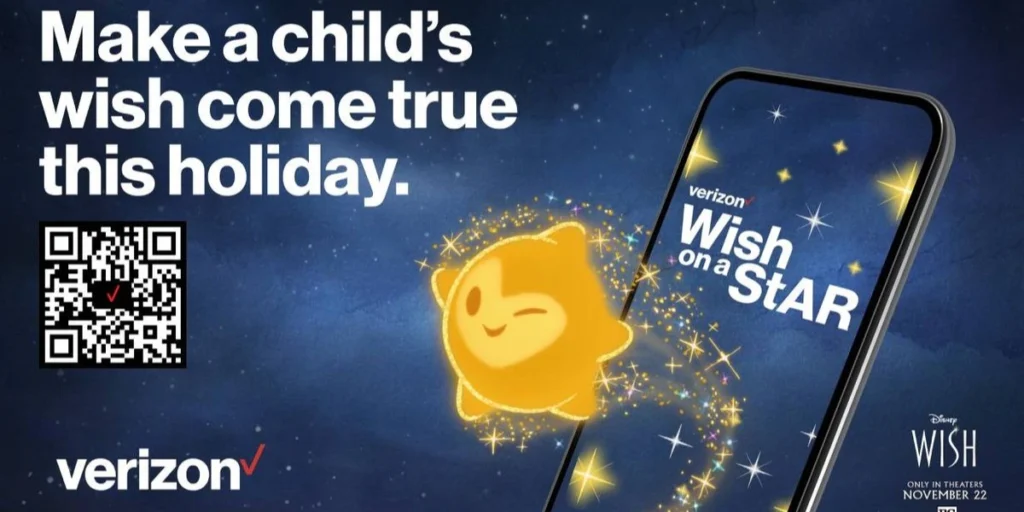
In November 2023, Disney collaborated with the worldwide telecommunications company Verizon to offer an augmented reality (AR) encounter titled ‘Wish on a Star.’
This experience enabled users to scan a QR Code, unveiling an AR display showcasing a constellation symbolizing the aspirations of underprivileged children.
Viewers had the opportunity to contribute by selecting a star and directing their donations towards the betterment of these children.
The campaign aimed to generate awareness for Disney’s upcoming movie ‘Wish’ while employing whimsical approaches to encourage community participation.
C. Ikea’s Blue Bag with QR Code for AR experience
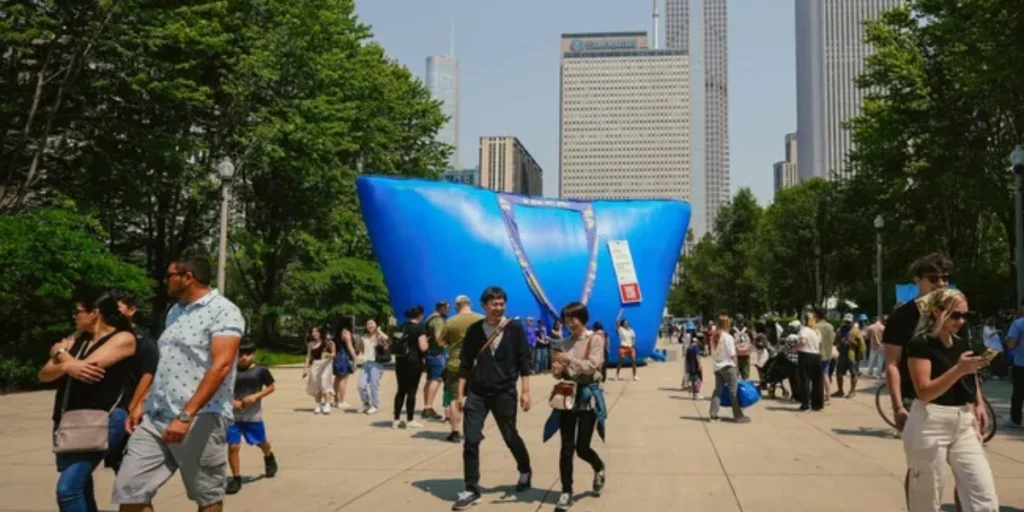
In June 2023, the home furnishing brand Ikea designed a 3D sculpture of the iconic Big Blue Bag, standing at 19 feet tall, and equipped it with a QR Code for a touring exhibition across the United States.
Upon scanning the code, viewers were treated to an augmented reality (AR) experience, where Ikea products appeared to soar out of the bag. Additionally, the audience received discount coupons that could be redeemed at the store.
3. Corporations partnering with TV streaming platforms
A. Walmart

In December 2023, Walmart incorporated QR Codes into a well-known TV series on NBCUniversal, allowing streaming audiences to buy merchandise featured in the episodes.
Throughout the shows, viewers were presented with ads showcasing products from the series. Using their remote controls, viewers could browse the product carousel, use arrow keys to scan a QR Code and finalize the purchase on walmart.com.
B. Barbie’s QR Code
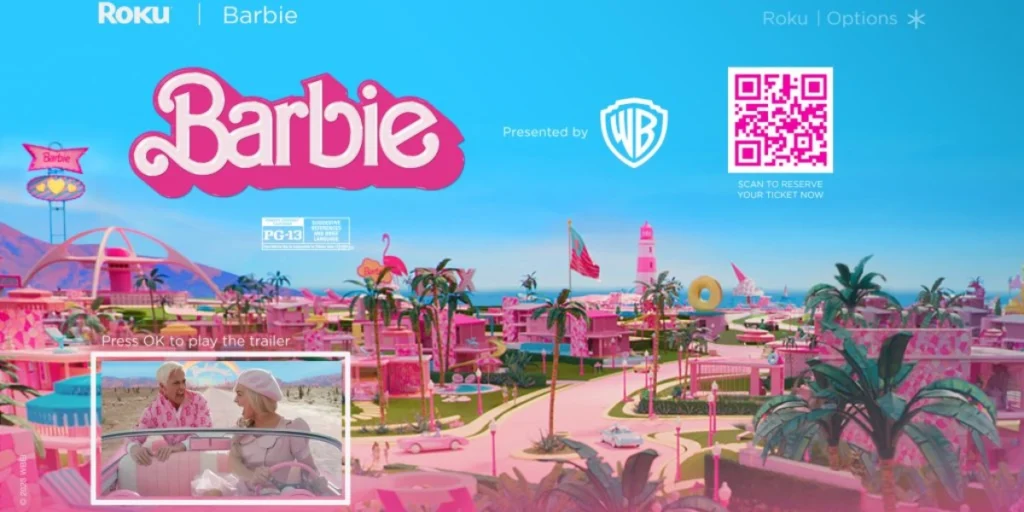
In July 2023, Warner Brothers collaborated with Roku, a TV streaming company, to promote the film ‘Barbie.’
As part of this initiative, Roku streaming TVs featured a banner on the home screen containing the movie trailer and a QR Code. Audience members had the option to scan the QR Code and purchase movie tickets.
4. Instances where the entertainment industry used QR Codes
A. QR Code in Netflix movie ‘Leave the World Behind’

In December 2023, the Netflix film ‘Leave the World Behind’ included a QR Code in one of its scenes, specifically integrated into the map of the United States.
This code was associated with the coordinates of an abandoned amusement park, sparking significant curiosity among the audience.
B. WWE QR Code
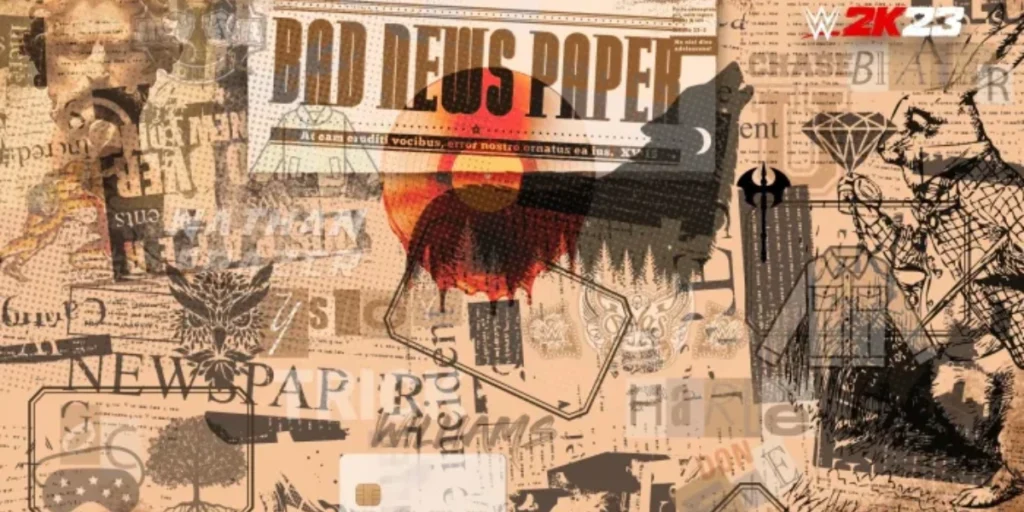
In March 2023, the WWE (World Wrestling Entertainment) displayed a QR Code on-screen during its live wrestling broadcasts.
Upon scanning, the code redirected viewers to an image containing various clues related to the wrestlers participating in the WWE 2K23 Championship.
5. QR Codes on products for consumer engagement
A. QR Code on Pringle’s moustache
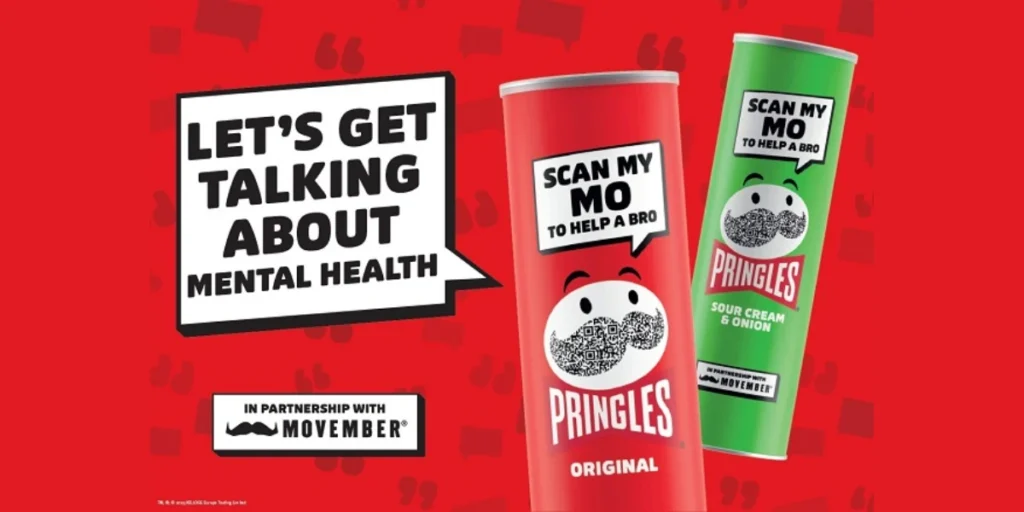
In October 2023, Pringles incorporated a QR Code into the mustache of their mascot, leading users to a communication platform. This tool offered access to mental health resources and facilitated engaging conversations.
B. QR Codes on Hershey’s gift package
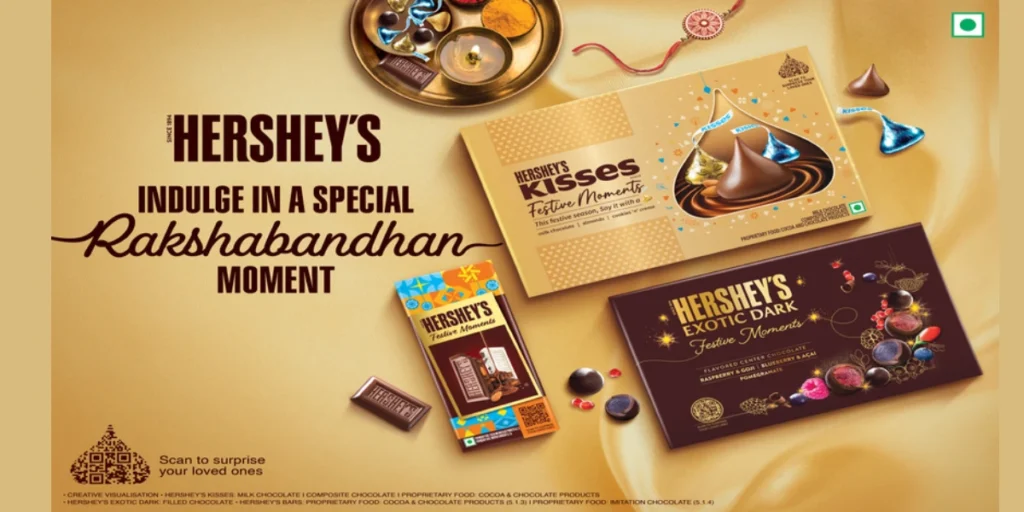
In August 2023, Hershey’s, the chocolate company, introduced QR Codes to its holiday gift packages in India. Scanning the code triggered a set of inquiries about the customer’s siblings.
After answering the questions, customers received a personalized message generated by AI, which they could then share with their siblings.
6. QR Codes being used to share the guidelines for enhanced safety of tourists
A. QR Codes on Oceanside lifeguard towers, California
In September 2023, lifeguards in Oceanside, California, implemented QR Codes on every lifeguard tower to inform beach visitors about current conditions.
Scanning the QR Code directed users to a website offering real-time beach information, including details on weather, water temperature, surf height, lifeguard tower status, and other safety-related information.
B. QR Codes on Dubai’s holiday homes
In May 2023, the Department of Economy & Tourism (DET) in Dubai issued a directive requiring owners of holiday homes to install QR Codes at the entrance.
The purpose was to furnish visitors with crucial details about both the property operator and the DET. Additionally, these QR Codes facilitated DET officials’ convenient inspections of holiday homes.
C. QR Codes in rental cars for tourist safety in Mexico
In April 2023, the implementation of QR Codes in rental cars commenced in the city of La Paz, Mexico, aiming to enhance tourist safety.
Scanning the QR Code provided access to a bilingual information page in both Spanish and English, detailing Mexican driving laws.
7. Government authorities incorporated the use of QR Codes
A. QR Codes at under-construction projects in India to strengthen the grievance redressal mechanism
In July 2023, an urban authority in India introduced signages featuring QR Codes at under-construction projects.
Upon scanning, the QR Code offered contact information for the agency and contractor involved in the projects, aiming to enhance the grievance redressal mechanism.
B. Parking signs with QR Codes in Dubai
In June 2023, the Road and Transport Authority of Dubai introduced 17,500 signs with QR Codes across parking zones, catering to the 80% of motorists who favor mobile payments.
These signs presented four QR Codes corresponding to various payment methods, streamlining the process for users making direct payments for parking.
C. QR Code-based grievance redressal system for a housing society in India
In April 2023, an Indian municipal corporation introduced QR Codes on residential buildings within societies to provide swift access to information, including details about owners, location, contact information, water service connection, and deposits.
These QR Codes also streamline processes for submitting complaints and making property tax payments.
H. Potential QR Code trends for 2024

1. Increased use of QR Codes in generative AI-driven marketing
According to a report by Market Us in Oct 2023, as more companies and organizations recognize the potential of AI to automate and enhance creative processes—the generative AI market size is projected to grow at a CAGR of 31.4% from 2023 to 2033.
It is widely predicted that artificial intelligence will drive enormous changes, particularly in the field of marketing.
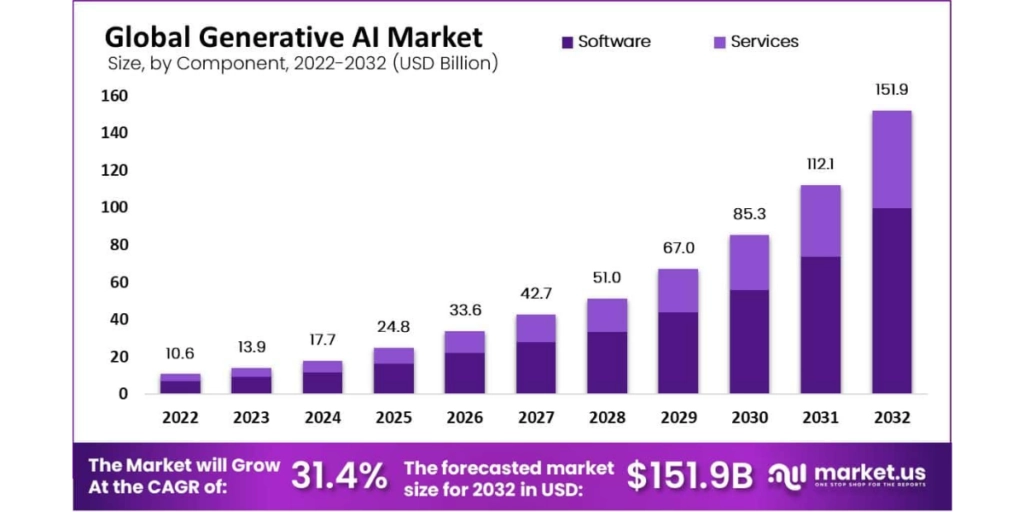
AI-generated designs can significantly enhance creativity, providing a competitive edge over others. Generative AI systems possess the ability to generate QR Codes with distinct patterns—including personalized images, colors, and shapes.
AI-generated QR Codes can improve engagement, tailor marketing, and collect useful data for companies. This year, the early adopter brands introduced AI-powered QR Codes for better customer engagement.
According to the internal data of Scanova, by mid-FY 2024-25, they’ve already reached 50% of last year’s total QR Codes, proving that QR Code usage keeps growing, helping businesses boost efficiency and engagement across sectors.
With further adoption of the technology, it is expected that brands will leverage AI-generated QR Codes for personalized branding and enhanced customer experience
2. Increased use of QR Codes with the latest technologies, such as AR and VR
According to a 2023 report by Statista Market Insights, the AR and VR market is expected to grow at a CAGR of 10.77% from 2024 to 2030.
While augmented reality (AR) enables users to experience the digital realm in the physical world, virtual reality (VR) enables users to explore and interact with a virtual environment in a manner that approximates reality.
When combined, these technologies give users fully immersive experiences
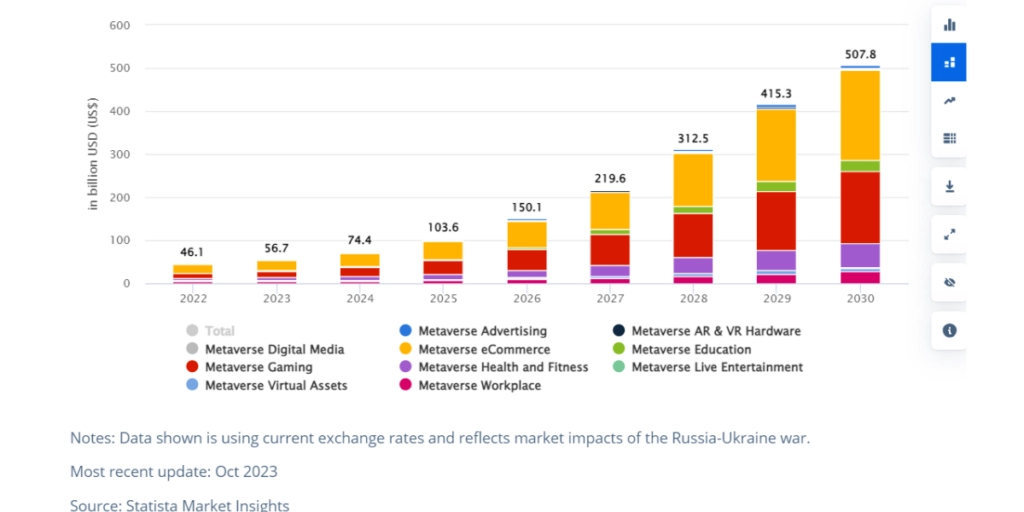
These technologies have also brought a whole new world of Metaverse into life. Reports suggest that the Metaverse market is expected to grow at a CAGR of 10.77% from 2024 to 2030.
The same report indicates that the Metaverse products and services market has a lot of potential across different verticals.
QR Codes create an ideal connection between the digital and real worlds. Popular companies have already adopted QR Codes to provide immersive experiences to their clients.
As more companies follow suit, it is anticipated that the global digital revolution will lead to a significant rise in QR Code usage.
3. Increased use of QR Codes for first-hand data collection
Businesses have traditionally used third-party cookies to gather customer information for advertisement. However, by gathering and selling customer information without their permission, third-party cookies directly violate consumer privacy.
As a result, Apple and Firefox have already prohibited third-party cookies. Google plans to phase them out by late 2024. With third-party cookies becoming obsolete, businesses will have to focus on a first-party data strategy to continue understanding customer preferences and drive targeted ad campaigns.
One of the best ways to collect first-hand consumer information without compromising their privacy is with QR Codes. Conversion-optimized QR Code landing pages make it easy for brands to gather customer data while interacting with them.
Due to their increased global recognition and customer adoption, an increasing number of enterprises will employ QR Codes as a secure data collection tool. The GDPR and SOC 2 data compliance features that most sophisticated QR Code generators provide address the issue of data protection.
4. Increased use of QR Codes for geo-location-based promotions
As per the location-based-services global market report 2023, the global location-based technologies market is expected to grow at a CAGR of 26.5% from 2023 to 2027. Businesses extensively use location-based services for geo-location-based promotions.
According to a survey conducted back in 2020, 95% of global companies were already using location-based services and data to reach customers. An upsurge in the use of smartphones and GPS-enabled devices is likely to make location-based services even more popular in the future.
It is anticipated that as location-based promotions expand, so will the usage of QR Codes. As location QR Codes can be linked to geo-location data, businesses can use them as a tool to target prospects based on their location.
This can enable businesses to create location-specific promotions/content, drive foot traffic to stores, or guide prospects to new products/services
About Scanova:
Scanova is an easy-to-use QR Code Generator that helps marketers create, design, manage, and track QR Codes for operational and promotional use cases.
Founded in 2013, the company has helped over 100,000+ businesses and marketers create QR Codes, including Amazon, Cisco, Johnson & Johnson, Intel, 7-Eleven, Aon Hewitt, and Levis.




Buenas tardes,
Le pongo en situación:
Queremos poner un QR que tenga nuestras redes sociales
1- La reseña de google my business
2- El perfil de Instgram
3- El perfil de facebook
4- El perfil de Pinterest
Una vez que hago esto, quiero que en las métricas me analicen el número de clics ha dado al botón de Instagram, de facebook etc,.
¿Se podría hacer? ¿Y cómo ?
Hola,
Puede hacerlo a través de una función llamada seguimiento de eventos. Le ayuda a ver cómo la audiencia interactúa con el contenido codificado en el Código QR después de escanearlo. Puedes aprender más acerca de esto aquí: https://scanova.io/blog/qr-code-tracking/
Informative blog!
I am looking for the stats on QR code and found this blog. This blog has deep information about QR codes. I want to appreciate writer for this kind of research. I really impressed!
Hi Menat,
We’re glad you found the article helpful.
I Hope You Will Share Such Type Of Impressive Content Again With Us So That We Can Utilize It And Get More Advantage.
Thank you for sharing informative post. Really helpful, well weritten.
We’re happy that you found the post helpful.
Thanks for sharing such useful and interesting information; I am waiting for your next post.
Hey!
You can also follow us on Facebook to stay updated on our latest posts. Cheers!